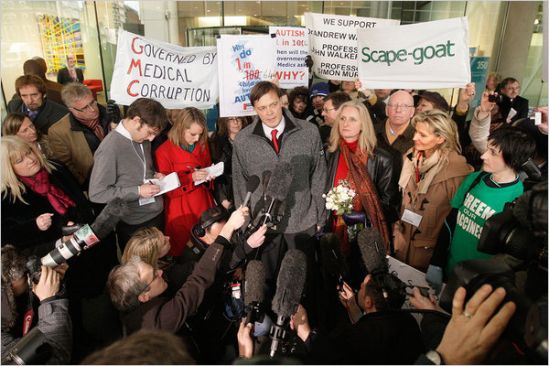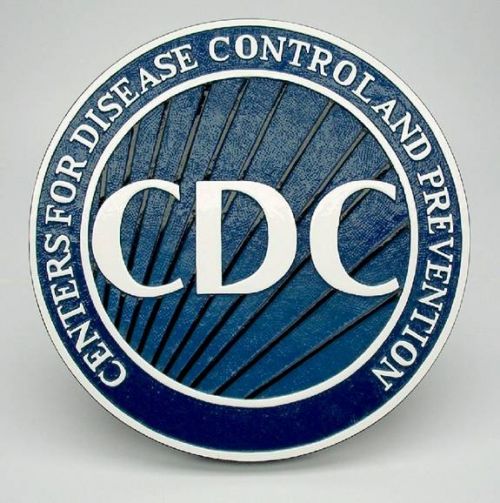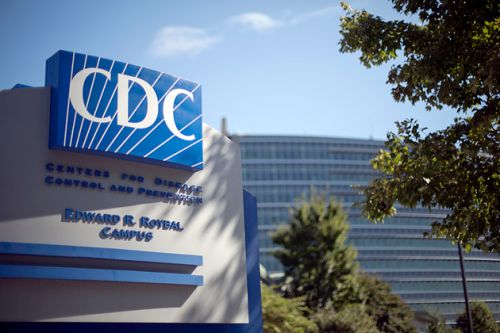Una sintesi dell lavoro dell'ex medico, perchè radiato in Uk, sig. Andrew Wakefield
Chi tocca Big Pharma fa la solita fine....
Autism and Andrew Wakefield
THE "WAKEFIELD" STUDIES: STUDIES HYPOTHESIZING THAT MMR CAUSES AUTISM
Dr. Paul Offit, M.D., FAAP, Chief of Infectious Diseases and Director of the Vaccine Education Center at Children's Hospital of Philadelphia. Those who claim that MMR causes autism often cite two papers by Andrew Wakefield and colleagues. This section summarizes those studies and lists their critical flaws.
The first Wakefield paper
In 1998, Andrew Wakefield and colleagues published a paper in the Lancet titled "Ileal-lymphoid-nodular hyperplasia, non-specific colitis, and pervasive developmental disorder in children."(1) Wakefield's hypothesis was that the MMR vaccine causes a series of events that include intestinal inflammation, loss of intestinal barrier function, entrance into the bloodstream of encephalopathic proteins, and consequent development of autism. In support of his hypothesis, Dr. Wakefield described 12 children with neurodevelopmental delay (8 with autism). All of these children had gastrointestinal complaints and developed autism within 1 month of receiving
MMR.
Critical flaws
-
About 90% of children in England received MMR at the time this paper was written. Because MMR is administered at a time when many children are diagnosed with autism, it would be expected that most children with autism would have received an MMR vaccine, and that many would have received the vaccine recently. The observation that some children with autism recently received MMR is, therefore, expected. However, determination of whether MMR causes autism is best made by studying the incidence of autism in both
vaccinated and unvaccinated children. This wasn't done.
-
Although the authors claim that autism is a consequence of gastrointestinal inflammation, gastrointestinal symptoms were observed after, not before, symptoms of autism in all 8 cases.
-
Children with autism were claimed to have low levels of circulating immunoglobulin A (IgA). However, levels reported were within the normal range for that age group.
-
Intestinal nodular hyperplasia (like enlarged tonsils in young children) is considered to be a variant of normal.
The second Wakefield paper
In 2002, Wakefield and coworkers published a 2nd paper examining the relationship between measles virus and autism.(2) The authors tested intestinal biopsy samples for the presence of measles virus genome from children with and without autism. Measles virus genome was detected by reverse-transcriptase polymerase chain reaction (RT-PCR) and in situ hybridization. 75 of 90 children with autism were found to have measles virus genome in intestinal biopsy tissue as compared with only 5 of 70 control patients.
Critical flaws
-
Measles vaccine virus is live and attenuated. After inoculation, the vaccine virus probably replicates 15-20 times. Measles vaccine virus is likely to be taken up by specific cells responsible for virus uptake and presentation to the immune system (termed antigen-presenting cells or APCs). Macrophages, B cells, and dendritic cells (DC) are different types of APCs. Because all APCs are mobile, and can travel throughout the body (including the intestine), it is plausible that a child immunized with MMR would have
measles virus genome detected in intestinal tissues using a very sensitive assay (such as RT-PCR). To determine if MMR is associated with autism one must determine if the finding is specific for children with autism. Therefore, children with or without autism must be identical in two ways. First, children with or without autism must be matched for immunization status (i.e. receipt of the MMR vaccine). Second, children must be matched
for the length of time between receipt of MMR vaccine and collection of the biopsy specimen. Although this information was clearly available to the investigators and critical to their hypothesis, it was specifically omitted from the paper.
-
Because natural measles virus is still circulating in England, it would have been important to determine whether the measles virus genome detected in these samples was natural measles virus or vaccine virus. Although primers are available to distinguish these two types of virus, the authors chose not to use them.
-
RT-PCR is a very sensitive assay. Laboratories that work with natural measles virus (such as the lab where these studies were performed) are at high risk of getting false positive results. No mention is made in the paper as to how this problem was avoided.
-
As is true for all laboratory studies, the person who is performing the test should not know whether the sample is obtained from a case or a control (blinding). Because no statement is made in the method section, it is unclear that blinding of samples occurred.
STUDIES SHOWING THAT MMR VACCINE DOES NOT CAUSE AUTISM
Four studies have been performed to refute a causal association between receipt of MMR and autism.
The first Taylor paper
In 1999, Brent Taylor and coworkers examined the relationship between receipt of MMR and development of autism in an excellent, well-controlled study.(3) Taylor examined the records of 498 children with autism or autism-like disorder. Cases were identified by registers from the North Thames region of England before and after the MMR vaccine was introduced into the United Kingdom in 1988. Taylor then examined the incidence and age at diagnosis of autism in vaccinated and unvaccinated children. He found the following: 1) the percentage of children vaccinated was the same in children with autism as in other children in the North Thames region; 2) no difference in the age of diagnosis of autism was found in vaccinated and unvaccinated children; and 3) the onset of "regressive" symptoms of autism did not occur within 2, 4, or 6 months of receiving the MMR vaccine.
The JAMA paper
In 2001, Nathalie Smith and coworkers examined the relationship between the increase in the number of cases of autism in California and receipt of the MMR vaccine.(4) The percentage of children immunized with MMR vaccine between 1980 and 1994 was compared with the incidence of autism during the same period. Although a dramatic increase in the incidence of children with autism was reported, the percentage of children that received MMR vaccine
remained the same.
The British Medical Journal paper
In a study that supported the findings in the JAMA paper, Hershel Jick and coworkers examined the incidence of autism in England between 1988 and 1993 and compared this with MMR immunization rates.(5) Although the incidence of autism increased, MMR immunization rates remained the same.
The second Taylor paper
A second study by Brent Taylor and coworkers examined the relationship between MMR vaccine and "new variant autism" (Wakefield's claim that autism is associated with inflammation of the small intestine).(6) Children with autism diagnosed between 1979 and 1998 were examined. The authors compared the number of children with autism and intestinal symptoms before 1988 and after 1988 (MMR was introduced into England in 1988). There was no difference. They concluded that there was, therefore, no evidence for "new variant autism" and provided further evidence that MMR vaccine was not associated with autism.
STUDIES ON THE ETIOLOGY OF AUTISM
Studies have focused on the genetics of autism and the timing of the first symptoms of autism.
Genetics of autism
One of the best ways to determine whether a particular disease or syndrome is genetic is to examine the incidence in identical (monozygotic) and fraternal (dizygotic) twins. Using a strict definition of autism, when one twin has autism, 60% of monozygotic and 0% of dizygotic twins have autism. Using a broader definition of autism (i.e. autistic spectrum disorder), when
one twin has autism, approximately 92% of monozygotic and 10% of dizygotic twins have autism. (7,8) Therefore, autism clearly has a genetic basis.
Timing of development of autism
-
Autism symptoms are present before 1 year of age
Perhaps the best data examining when symptoms of autism are first evident are the "home-movie studies". These studies took advantage of the fact that many parents take movies of their children during their first birthday (before they have received the MMR vaccine). Home movies from children who were eventually diagnosed with autism and those who were not diagnosed with autism were shown to blinded neurodevelopmental specialists. Investigators were, with a very high degree of accuracy, able to separate autistic from non-autistic children at one year of age.(9-13) These studies found that subtle symptoms of autism are present earlier than some parents had suspected, and that receipt of the MMR vaccine did not precede the first symptoms of autism.
-
Autism symptoms are present before 4 months of age
Other investigators extended the home-movie studies of one-year-old children to include videotapes of children taken at 2-3 months of age. Using a sophisticated movement analysis, videos from children eventually diagnosed with autism or not diagnosed with autism were coded and evaluated for their capacity to predict autism. Children who were eventually diagnosed with autism were predicted from movies taken in early infancy.(14)This study supported the hypothesis that very subtle symptoms of autism are present in early infancy and argue strongly against vaccines as a cause of autism.
-
Evidence that autism occurs in utero
Toxic or viral insults in utero as well as certain central nervous system disorders are associated with an increase in the incidence of autism. For example, children exposed to thalidomide during the first or early second trimester were found to have an increased incidence of autism.(15) However, autism occurred in children with ear, but not arm or leg, abnormalities. Because arms and legs develop after 24 weeks gestation, the risk period for autism following receipt of thalidomide must be before 24 weeks gestation. In support of this finding, Rodier and colleagues(16) found
evidence for structural brainstem abnormalities in children with autism. These abnormalities could only have occurred during brainstem development in utero. Similarly, children with congenital rubella syndrome are at increased risk for development of autism.(17-23) Risk is associated with exposure to rubella prenatally, but not postnatally.
-
Finally, children with fragile X syndrome or tuberous sclerosis are also at increased risk of developing autism. Taken together, these findings indicate that autism is likely due to abnormalities of the central nervous system that occur in utero.
SUMMING UP
Studies of 1)the genetics of autism, the timing of the first symptoms of autism (home-movie studies), 3)the relationship between autism and the receipt of the MMR vaccine, 4)the histopathology of the central nervous system of children with autism, and 5)thalidomide, natural rubella infection, fragile X syndrome, and tuberous sclerosis all support the fact
that autism occurs during development of teh central nervous system early in utero.
Unfortunately, for parents who will someday bear children diagnosed with autism, the controversy surrounding vaccines has diverted attention and resources away from a number of promising leads.
References
-
Wakefield, A.J., et al.Ileal-lymphoid-nodular hyperplasia, non-specific colitis, and pervasive developmental disorder in children Lancet 351: 637-641, 1998.
http://www.ncbi.nlm.nih.gov/entrez/query.fcgi?cmd=Retrieve&db=PubMed&list_ui
ds=9500320&dopt=Abstract
-
Uhlmann, V., et al. Potential viral pathogenic mechanism for new variant inflammatory bowel disease. Journal of Clinical Pathology: Molecular Pathology 55:1-6, 2002.
http://mp.bmjjournals.com/cgi/content/full/54/6/DC1?eaf
-
Taylor, B., et al. Autism and measles, mumps, and rubella vaccine: no epidemiological evidence for a causal association. Lancet 353:2026-2029,1999.
http://www.ncbi.nlm.nih.gov/pubmed/10376617
-
Dales, L., et al. Time trends in autism and in MMR immunization coverage in California. JAMA 285:1183-1185, 2001
http://www.ncbi.nlm.nih.gov/pubmed/11231748
-
Kaye, J.A., et al. Mumps, measles, and rubella vaccine and the incidence of autism recorded by general practitioners: a time trend analysis. Brit Med J 322:460-463, 2001.
http://www.ncbi.nlm.nih.gov/pubmed/11222420
-
Taylor, B., et al. Measles, mumps, and rubella vaccination and bowel problems or developmental regression in children with autism: population study. Brit Med J 324:393-396, 2002.
http://www.ncbi.nlm.nih.gov/pubmed/11850369
-
Bailey, A., et al. Autism as a strongly genetic disorder: evidence from a British twin study. Psychol Med 25:63-77, 1995.
http://www.ncbi.nlm.nih.gov/pubmed/7792363
-
Folstein, S., et al. Infantile autism: a genetic study of 21 twin pairs. J Child Psychol Psychiatry 18:297-321, 1977.
-
Adrien, J., et al. Blind ratings of early symptoms of autism based upon family home movies. J Am Acad Child Adolesc Psychiatry 32:617-626, 1993.
http://www.ncbi.nlm.nih.gov/pubmed/7684363
-
Adrien, J., et al. Early symptoms in autism from family home movies: evaluation and comparison between 1st and 2nd year of life using I.B.S.E. scale. Acta Paedopsychiatrica 55:71-75, 1992.
http://www.ncbi.nlm.nih.gov/pubmed/1374996
-
Adrien, J., et al. Autism and family home movies: preliminary findings. J Autism Devel Disorders 21:43-49, 1991.
http://www.ncbi.nlm.nih.gov/pubmed/2037548
-
Osterling, J., et al. Early recognition of children with autism: a study of first birthday home videotapes. J Autism Devel Disorders 24:247-257, 1994.
http://www.ncbi.nlm.nih.gov/pubmed/8050980
-
Mars, A.E., et al. Symptoms of pervasive developmental disordeers as observed in prediagnostic home videos of infants and toddlers. J Pediatr 132:500-504, 1998.
http://www.ncbi.nlm.nih.gov/pubmed/9544908
-
Teitelbaum, P., et al. Movement analysis in infancy may be useful for the early diagnosis of autism.Proc Natl Acad Sci USA 95:13982-13987, 1998.http://www.ncbi.nlm.nih.gov/pubmed/9811912
-
Stromland, K., et al. Autism in thalidomide embropathy: a population study.In Devel Med Child Neurol 36:351-356, 1994.
http://www.ncbi.nlm.nih.gov/pubmed/8157157
-
Rodier P., et al. Embryological origin for autism: developmental anomalies of the cranial nerve motor nuclei. J Comp Neurol 370:247-261, 1996.
http://www.ncbi.nlm.nih.gov/pubmed/8808733
-
Feldman, R.B., R. Lajoie, J. Mendelson, and L. Pinsky. Congenital rubella and language disorders. Lancet 2:978, 1971.
-
Feldman, R.B., L. Pinsky, J. Mendelson, and R. Lajoie. Can language disorder not due to peripheral deafness be an isolated expression of prenatal rubella? Pediatrics 52:296-299, 1973.
-
Swisher, C.N., and L. Swisher. Congenital rubella and autistic behavior.
N Engl J Med 293:198, 1975.
-
Lubinsky, M. Behavioral consequences of congenital rubella. J Pediatr 94:678-679, 1979.
-
Deykin, E.Y., and B. MacMahon. Viral exposure and autism. Am J Epidemiol 109:628-638, 1979.
-
Chess, S., P. Fernandez, and S. Korn. Behavioral consequences of congenital rubella. J Pediatr 93:699-703, 1978.
http://www.ncbi.nlm.nih.gov/pubmed/702254
-
Chess, S. Autism in children with congenital rubella. J Autism Child Schizo 1:33-47, 1971
fonte: http://www2.aap.org/immunization/families/autismwakefield.html
 Salvatore Morelli
Salvatore Morelli












Inserted
Skipped
None
Removed